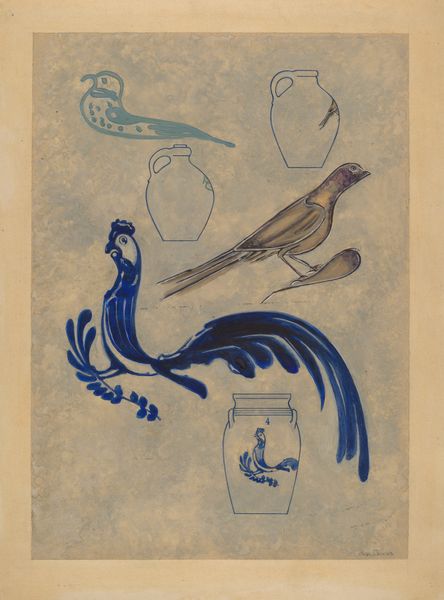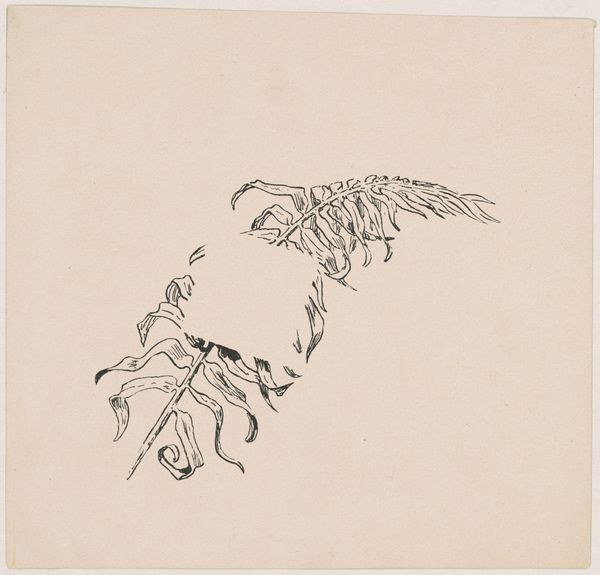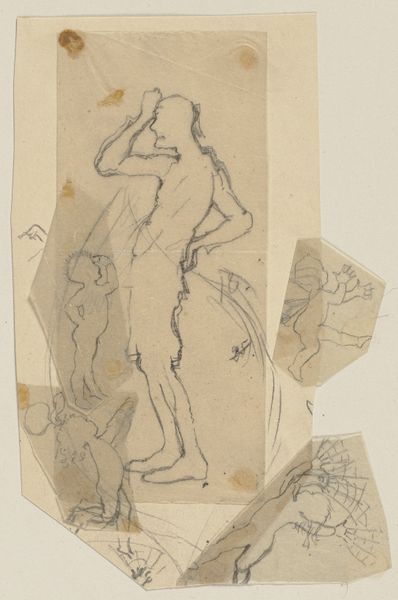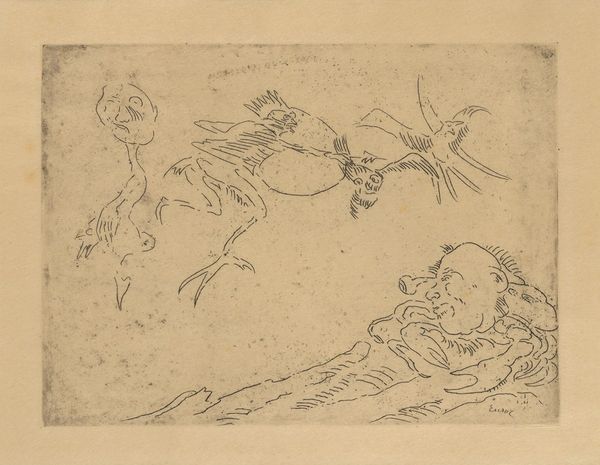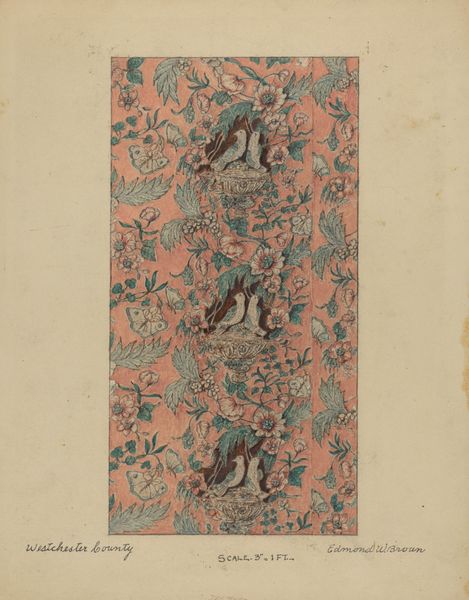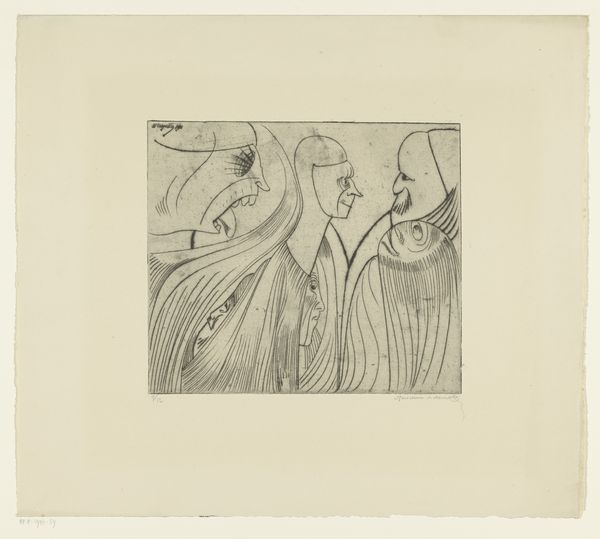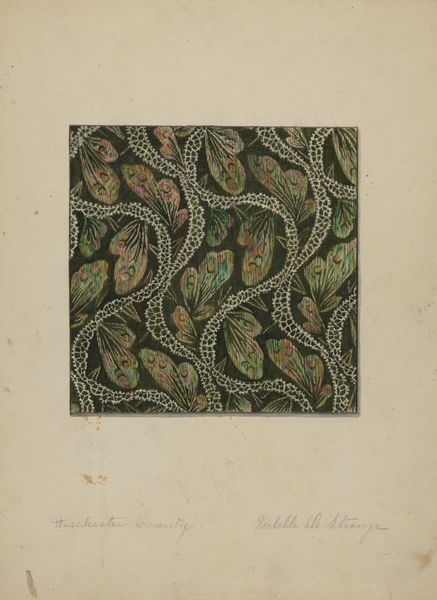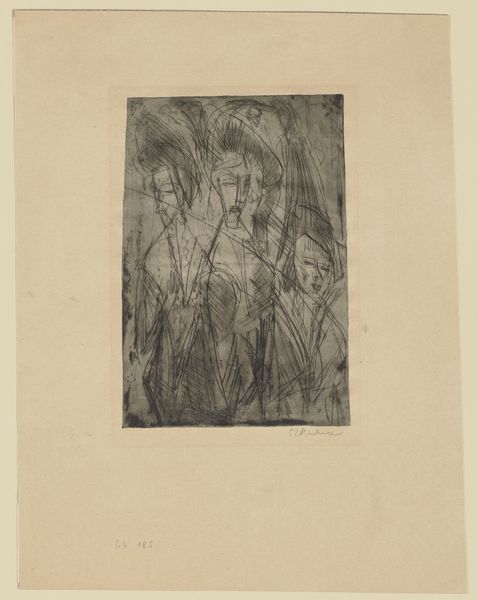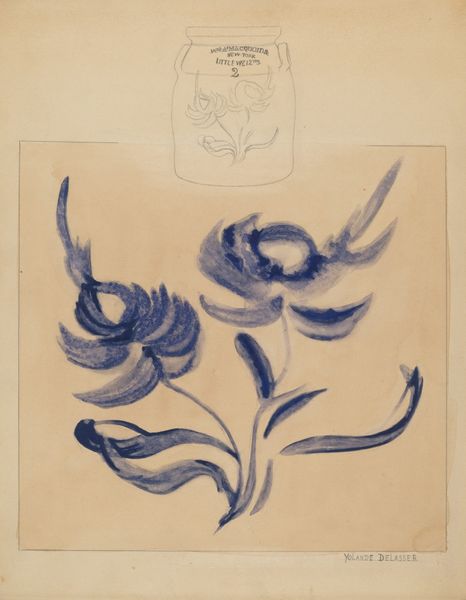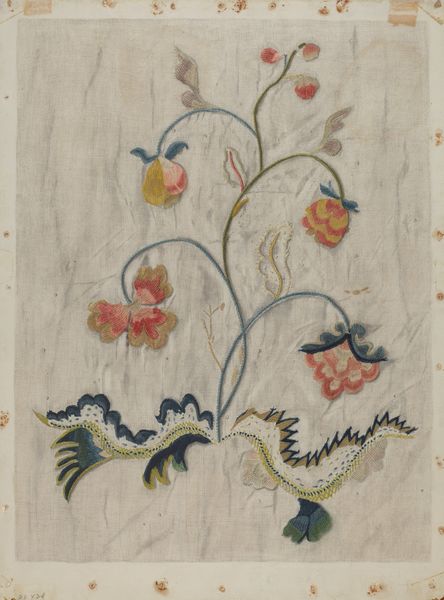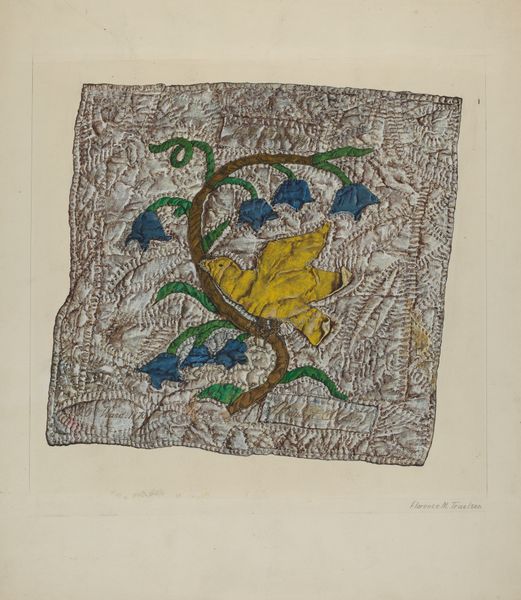
drawing, paper, ink
#
drawing
#
ink painting
#
paper
#
form
#
ink
#
geometric
#
line
Dimensions: overall: 50.8 x 38.1 cm (20 x 15 in.) Original IAD Object: 18" High 6 1/2" Base
Copyright: National Gallery of Art: CC0 1.0
Curator: The first thing that strikes me is how delicately this botanical form is rendered. What a soothing composition. Editor: Indeed. The work you're observing is entitled "Jug" and was completed around 1941 by John Tarantino, utilizing ink on paper. It invites close scrutiny of the lines themselves. Curator: Yes, the composition's geometric heart, a central, symmetrical element from which the other aspects branch...almost mimicking organic growth. Editor: Note how Tarantino utilizes line—hatching, contour—to build form and volume, giving the jug's constituent forms substance despite the delicacy of the medium. Curator: The title intrigues. "Jug." While the central form possesses a vase-like symmetry, and perhaps suggests containment, it deviates far from a standard representation. Are we meant to see an abstract essence of a jug, rather than its literal shape? Editor: Perhaps it transcends mere utilitarian association. Considering a jug is essentially a vessel, do you find that the object itself operates more like a sacred chalice, a source of nourishment? The formal aspects invite this symbolic reading. Curator: I see what you mean. The carefully placed shadows also play their part in grounding what is otherwise a slightly dreamlike form. Note how Tarantino's economy of detail throws the biomorphic forms into relief, almost suspended against the ground. Editor: This restraint also accentuates a feeling of hushed intimacy. We could look into Tarantino's biography. Knowing how his life experiences shaped his visual vocabulary might lead us closer to unlocking a personal symbolism within. Curator: Undoubtedly, such insight would deepen our understanding, yet I think its pure distillation of form holds considerable appeal on its own. Its geometry possesses its own vocabulary. Editor: Agreed. While it may present an outward simplicity, in its restraint lies a kind of sophisticated engagement, revealing unexpected subtleties with patient viewing. Curator: Very well said. The artwork reminds us that complex ideas do not necessarily require complicated delivery. Editor: And that beauty can often be discovered through simple forms—it's been a rewarding exchange, looking into "Jug".
Comments
No comments
Be the first to comment and join the conversation on the ultimate creative platform.
